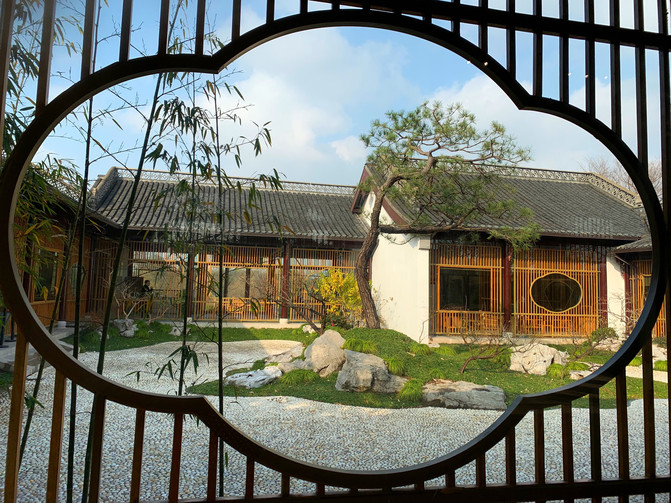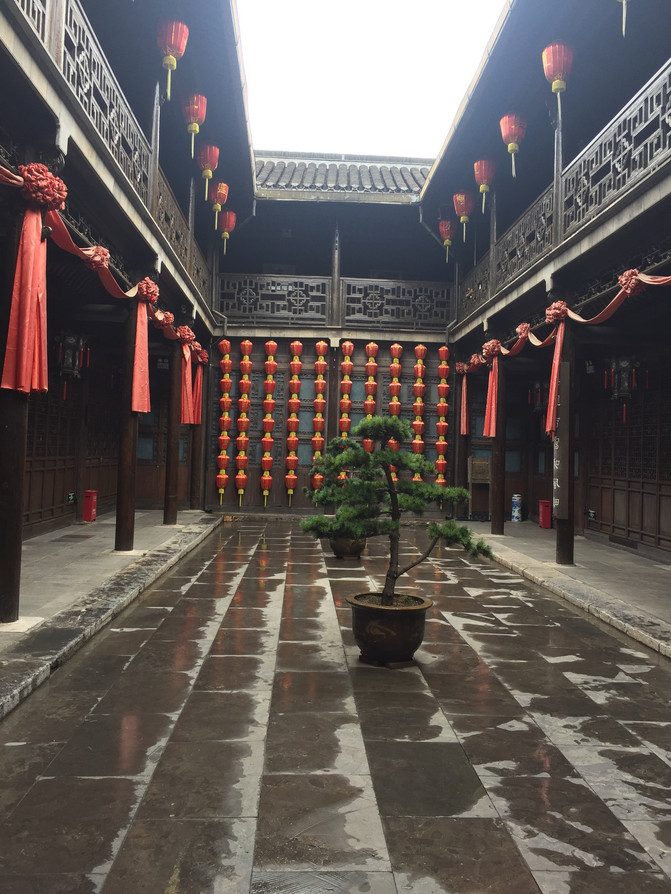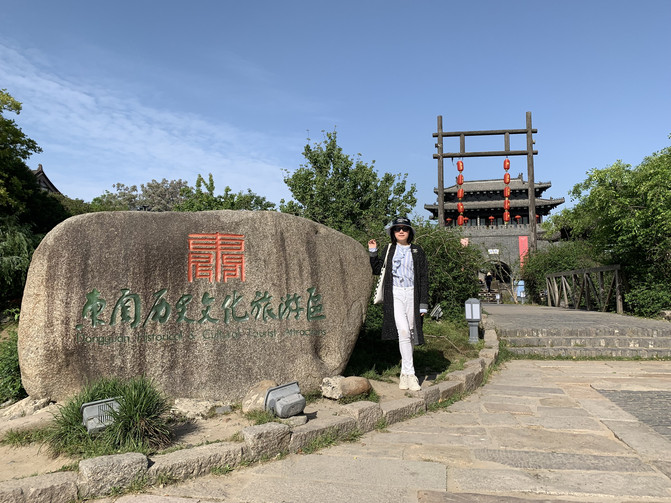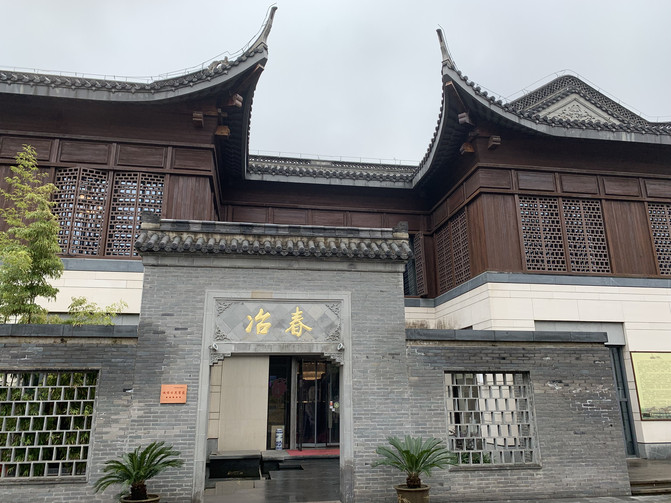Old Yangzhou in the ancient alley (a must-check place for literary and artistic youth)
I come to Yangzhou every year to have a date with delicious food.



Although I have been to Yangzhou countless times, my favorite is still the ancient alleys and old houses.


[He Yuan]
The first garden in the late Qing Dynasty

He Garden, also known as "Jixiao Villa", is known as the "First Garden in the Late Qing Dynasty". It is a Han classical garden building built in the middle of the Qing Dynasty.


The biggest feature of He Garden is its ingenious conception of stringing buildings and complex corridors, which brings the function and charm of corridor buildings to the extreme.


It was made by He Zhiyan during the Guangxu period of the Qing Dynasty. The original site of He Garden was an ancient garden during the Qianlong period, named Shuanghuai Garden. Many famous people once lived here. For example, Huang Binhong, a famous master of traditional Chinese painting, has been to Yangzhou six times and lives on the east floor of the Riding Building.


Mr. Zhu Qianhua, a famous writer, once lived in Heyuan for more than five years. His former residence was on the second floor of the east of the Equestrian Building. Among them, Pianshishan House is a masterpiece of Master Shi Tao's stacked mountains, which can be called an isolated copy in the world. It is known as "the No. 1 Garden in the Late Qing Dynasty in China."



[Slender West Lake]
The scenery in Slender West Lake is both beautiful in the south and majestic in the north. Such a building is really rare!!


Xiaohong Bridge

Yuban Bridge

Wuting Bridge

baita

Slender West Lake Art Museum

Flowing on the stone wall

Shroud the forest and observe the wind

yutai

Jinquanhuayu

Tenghua Bookstore

[Lu's Salt Merchants Residence]
It is the largest luxury residence of salt merchants in Yangzhou in the late Qing Dynasty. It is known as the "First Floor of Salt Merchants" of the Lu Family Salt Merchants. The owner of the house is Lu Shaoxu, a businessman. According to reports, this house was built during the Guangxu period of the Qing Dynasty and covers an area of more than 10,000 square meters. The construction of this house cost more than 70,000 taels of silver that year. With its continuous architectural community and exquisite architectural style, it has become the most dazzling among many pearls. It is a well-deserved new attraction for Yangzhou's ancient city culture.







If Yangzhou is the most Chinese, then Guxiang is the most Yangzhou. Each step is like an ink painting walking in Jiangnan. The old city of Yangzhou contains more than 500 long historical alleys.
[Pishi Street]
Pishi Street is a precious fossil preserved in Yangzhou, the "slow city of history". Pishi Street was once Yangzhou's "leather goods street". Leather goods have been a symbol of fashion and elegance since ancient times. Yangzhou, a wealthy place in history, certainly had a leather goods business, and eventually formed a "leather goods street". This street is Pishi Street.
Now I come to Pishi Street
The first impression is that literature and art are of style
Today, follow me to explore Pishi Street,
There are many art shops suitable for taking photos














[Diguan Di]
The story of the old street and the food of the old street... are the most unique feelings of this city, and they are also the little-known taste hidden in the bones of Yangzhou. A large part of the scenery of a city lies in the "taste" of the city.
DiguandiIt is such an old street that meets the southern end of Guanxiang in the east and Sanzhu 'an Street in the west. The old street, which is less than 100 meters long, is occupied by three large houses: Wang's Xiaoyuan, Ding's House, and Ma's House, forming an out-and-out "big houses" group of salt merchants.

Wang's Xiaoyuan is a mansion built by Wang Zhuming, a salt merchant in Anhui Province. It is simple and elegant without losing the atmosphere of wealth. The park has a boat hall, a flower hall, a study room, a Jingshe, a rockery, a fish pond, flowers and trees.

Ding's Mansion
Yangzhou female talent once lived here
Blue bricks and small tiles, carved beams and flowered windows, cornices, rockery corridors, pool pavilions... The renovated Ding's salt merchant mansion is very grand, forming a "big house door" group together with the surrounding Ma's salt merchant mansion and Wang's small garden.


Now it has 72 tenants

[Anle Lane]
Anle LaneIt is a north-south tunnel 3 meters wide and more than 200 meters long. There were not many pedestrians in the alley and it was very quiet. I heard from residents in the alley that in the past, most of these places were scholarly families.
There is a national cultural relics protection unit in the alley--Zhu Ziqing's Former Residence, was built in the late Qing Dynasty and is still intact today. It is a three-style folk residence with traditional Yangzhou structure.










[Dongguan Street]




Night in Yangzhou












Ancient streets and old alleys are scattered together, and I can't help but feel tired while walking. And these hidden resting points are the best choice when your feet are sore. Some come to drink tea, some come to sit down, or some famous post stations in history, and ancient alleys are the most exquisite stops.
|| Yechun Tea House-a century-old tea shop with equal emphasis on color, aroma and shape

Yechun Tea House mainly focuses on Huaiyang fine snacks and snacks. It selects strict materials, has unique methods, pays equal attention to color, aroma and shape. It has strong local characteristics and is deeply loved by customers.



|| Fuchun Tea House-the most authentic "water bag" in old Yangzhou
Fuchun is Yangzhou's eye-catching emblem and a model of combining tradition and modernity. After a century of development, Fuchun has become a legend in Yangzhou


|| Jinchun Grand Hotel
During the Qianlong period of the Qing Dynasty, Yangzhou salt merchant Wu built Jinchun Garden, which meant "beautiful spring" and "beautiful spring". Qianlong's southern tour once stationed in Jinchun Garden as a palace and wrote a poem. Later, dignitaries, literati and literati came in droves, and Jinchun Garden once became a sight in Jiangnan. Qianlong personally wrote the title "Jinchun" with his royal pen, and today it is full of vitality.

||fun garden
This teahouse located in Yangzhou Guesthouse can be said to be unknown to everyone.
Quyuan was originally the residence of the salt merchants. When Emperor Qianlong visited Yangzhou for the sixth time, he visited it four times. The name of the park "Quyuan" was also given by Qianlong.




shrimp seed noodles



||Dongyuan Xiaoguan
Dongyuan began in the Qing Dynasty,
The small hall is named after the scenery of the East Garden. The design follows the scenery of the East Garden garden. The emerald green style is supplemented by rattan and green plants and the lush scenery of the East Garden. It is elegant. The black iron art is unique and retro and comfortable. The wall sketches are novel and vivid, and they are surrounded by mountains and rivers of the East Garden. Being in it is full of fun, allowing every customer to enjoy the high-quality Huaiyang snacks and experience another beautiful scenery of the East Garden.


||Jiulu Branch
Yangzhou century-old brand. The boss carefully launched Weiyang finely divided Sanding steamed buns, Tangguanbao, Shaomai, Huai dumplings, and crispy cakes, etc., and many literati also gathered here.




||Babu Caofang
Exquisite cakes passed down for a century

The old house in the ancient alley
Delicious food in ancient alleys
Waiting for you quietly
Walking towards him...
If you want to have an in-depth understanding of famous attractions such as Slender West Lake, Heyuan, Geyuan, and Dongguan Street, you can move from my previous two travel notes:
Chapter 1:3-day tour of Yangzhou (Ancient Canal, Slender West Lake, Geyuan, Heyuan, Lushi Salt Merchants, Dongguan Street)
http://you.ctrip.com/travels/yangzhou12/3706665.html
Chapter 2: A lazy two-day tour in Yangzhou in winter (Slender West Lake and Zhuyi Bay Scenic Area)
https://you.ctrip.com/travels/yangzhou12/3766234.html
Chapter 3: Old Yangzhou in the ancient alley (a must-check place for young literary and artistic people)
